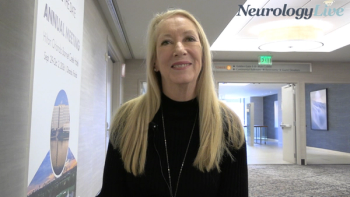
AASM Guideline Updates Recommendations for Central Disorders of Hypersomnolence
The new guideline addresses recent FDA-approved prescription medications to treat narcolepsy, idiopathic hypersomnia, and Kleine-Levin syndrome.
The American Academy of Sleep Medicine (AASM) has provided a new guideline for the treatment of central disorders of hypersomnolence.1 Published in the Journal of Clinical Sleep Medicine, this new guideline provides the first update since 2007 for these disorders.
The guideline offers recommendations for treatment selection in both adult and pediatric patients, with treatments categorized as “strong,” indicating that clinicians should follow the recommendation under most circumstances or “conditional,” indicating that there is less certainty, according to available evidence, but most patients would likely still benefit from the treatment. When considering a conditional recommendation, clinicians should consider individual patient history, value, and preferences to identify the appropriate course of action.2 Lynn Marie Trotti, MD, MSc, coauthor, AASM board of directors, associate professor of neurology, Emory University School of Medicine, spoke with NeurologyLive on the guideline, which has suggestions for disorders such as narcolepsy, idiopathic hypersomnia, Kleine-Levin syndrome, and hypersomnias secondary to medical disorders (TABLE).
“The biggest changes from the existing guideline that the AASM has for these disorders is probably the new medications that are included in this guideline that were not available at the time of the prior guideline. In particular, that includes solriamfetol [Sunosi; Jazz Pharmaceuticals] and pitolisant [Wakix; Harmony Biosciences], both of which were FDA-approved for narcolepsy in 2019,” Trotti said. “Pitolisant additionally has a conditional recommendation for the treatment of idiopathic hypersomnia in adults.”
READ MORE:
The guideline provides a total of 20 recommendations for the use of medications for adults, including solriamfetol and pitlolisant. Two additional recommendations are specific to pediatric patients with narcolepsy, suggesting the conditional use of modanifil or sodium oxybate, which was approved by the FDA in 2018 for use in children aged 7 years and older. According to Trotti, in the previous guideline, there were no specific recommendations for children aside from comments on potential medication safety. Among the strong recommendations were the use of modafinil, pitolisant, sodium oxybate, and solriamfetol for the treatment of narcolepsy in adults. Additionally, the group recommended that clinicians use modafinil for the treatment of idiopathic hypersomnia in adults.
A task force was commissioned by the AASM, comprised of sleep medicine clinicians who collectively crafted the clinical practice recommendations using a systematic review and the Grading of Recommendations Assessment, Development and Evaluation (GRADE) system. Strong or conditional recommendations were assigned following an evaluation of GRADE criteria, including quality of evidence, balance of beneficials and harmful effects, patient values and preferences, and resource use. Critical outcomes such as excessive daytime sleepiness, cataplexy, disease severity, and quality of life were evaluated for each intervention.
Following the guideline’s development, it was approved by the AASM board of directors, subsequent to its availability for public comment. While the information was developed for health care providers, patient understanding is also crucial in facilitating informed decisions about their care, according to Trotti. The guideline was also endorsed by several patient organizations, including Wake Up Narcolepsy, the Narcolepsy Network, Project Sleep, and the Hypersomnia Foundation. The Child Neurology Society endorsed the guideline as well, and it was further affirmed by the American Academy of Neurology.
While the guidelines were recently approved, the field is continually invested in research efforts, with several drugs in the development pipeline, and “novel mechanisms” such as hypocretin receptor agonism being considered for sleep disorders. “Those drugs are pretty early in the development pipeline, so we'll see where they go, but it's very exciting that the treatment landscape, one, has as many options as it does right now, but in the future may have even more, so we can really do a better job of personalizing medicine and targeting full symptom control for patients with these disorders,” Trotti said.
Since the new guideline, studies of lower sodium oxybate for narcolepsy have been published, and
Read the full guideline
REFERENCES
1. Maski K, Trotti LM, Kotagal S, et al. Treatment of central disorders of hypersomnolence: an American Academy of Sleep Medicine clinical practice guideline. J Clin Sleep Med. Published online April 23, 2021. doi:10.5664/jcsm.9328
2. New guideline provides clinical recommendations for treating sleep disorders that cause excessive sleepiness. News release. American Academy of Sleep Medicine. August 3, 2021. Accessed August 19, 2021. https://aasm.org/new-guideline-provides-clinical-recommendations-treating-sleep-disorders-excessive-sleepiness/
Newsletter
Keep your finger on the pulse of neurology—subscribe to NeurologyLive for expert interviews, new data, and breakthrough treatment updates.




































